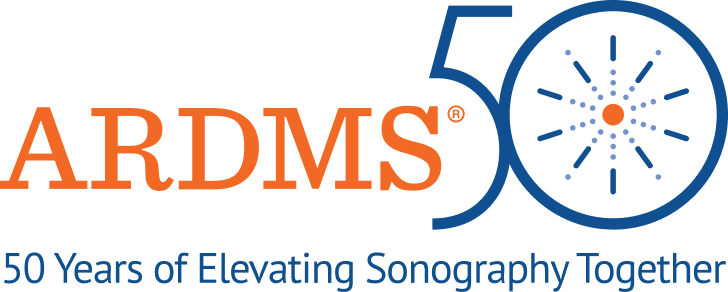Whether you have an upcoming sonogram appointment and want to learn more about what to expect or you noticed that your doctor or sonographer has an ARDMS patch on their lab coat, this section will provide you with everything you need to know about ARDMS and its certifications, sonograms, ultrasounds and the field of Sonography.
WHO IS ARDMS?
The American Registry for Diagnostic Medical Sonography® (ARDMS®) administers examinations and awards credentials in areas of ultrasound. Through its mission, ARDMS empowers sonographers to provide exceptional patient care through rigorous assessments and continual learning. Inteleos is the non-profit governance and management organization for ARDMS and its companion Council, the Alliance for Physician Certifications & Advancement (APCA).
Our official name is the American Registry for Diagnostic Medical Sonography® (ARDMS®), and we are an independent, nonprofit organization that certifies medical professionals in the field of Sonography.
We are the oldest and largest worldwide sonography credentialing organization, and we offer the most specialty credentials for medical professionals (including physicians). Since our incorporation in 1975, we have certified nearly 90,000 medical professionals around the world using a rigorous application and examination process.
We administer examinations and award the following credentials:
• Registered Diagnostic Medical Sonographer® (RDMS®)
• Registered Diagnostic Cardiac Sonographer® (RDCS®)
• Registered Vascular Technologist® (RVT®)
• Registered Musculoskeletal™ Sonographer (RMSKS™)
Our credentials are recognized as the top standard throughout the global medical community and by leading professional sonography and vascular organizations. To ensure you are receiving the highest level of care, ask if the person performing your sonography examination has been certified by ARDMS.
WHAT IS SONOGRAPHY?
Sonography is a non-invasive medical imaging procedure used to diagnose, treat and prevent medical conditions relating to organs or systems in the body.
During an examination, a sonographer or physician uses a transmitting device called a transducer to send out high-frequency ultrasound waves. These harmless sound waves, which contain no radiation, bounce off the surfaces of the object they hit. The reflected sound forms an echo, and that echo is turned into a visual representation on a screen.
COMMON SONOGRAPHY TERMS
Sonography: A non-invasive medical procedure that uses the echoes of high-frequency sound waves (ultrasound) to construct an image (sonogram) of internal organs or body structures. Sonography is commonly used to observe fetal growth and monitor the health of organs.
Ultrasound: High-frequency sound waves used for diagnostic or therapeutic purposes.
Transducer: A device that sends and receives signals and converts the received signals into an image.
Sound Wave: A wave that transmits sound.
Sonographer: A specialist in the use of Sonography; a person who performs sonography examinations.
WHO WILL PERFORM THE SONOGRAM?
The sonogram will typically be performed by a sonographer, physician or a medical imaging specialist. To ensure you are receiving the highest level of care, ask if the person performing your sonogram has been certified by ARDMS.
WHAT HAPPENS DURING A SONOGRAM?
An odorless, colorless gel is applied to your skin around the area of your body that will be examined. The sonographer will then place a small handheld device called a transducer on your skin. The transducer emits high-frequency pulses of ultrasonic waves that travel into your body and bounce off whatever they reach.
As your body reflects the sound waves back, images appear on the screen. This is where the gel comes in handy, as it helps eliminate air pockets between your body and the transducer, thus providing clearer images.
As the transducer is moved around, images of various organs appear on a monitor. The sonographer optimizes the images and electronically stores the ones most useful for diagnostic purposes. Selected images are then shared with an interpreting physician for a final diagnosis.
WHY DO I NEED A SONOGRAM?
You may need a sonogram for a variety of different reasons. Your physician may order one to determine the best way to treat you; monitor fetal growth; monitor the health of your heart, abdomen, vascular or musculoskeletal systems; or uncover cancer.
WHY DOES CERTIFICATION MATTER?
To obtain certification, medical professionals must pass a rigorous examination that tests their knowledge and practical, real-world skills, all of which take years of training and experience to acquire.
When a sonography professional holds certification from ARDMS, you know that he or she is dedicated to providing high-quality care and meeting the highest standards. No one has to be certified; instead, they choose to be certified to show how seriously they take their work.
